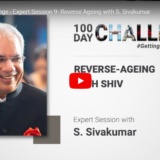Marketing to the Bottom of the Pyramid

Earlier this week (7 Dec), I spoke to the members of the six winning teams of ISB’s iDiya initiative (http://www.isb.edu/iDiya/). My topic was “Marketing to the Bottom of the Pyramid”. Actually, I conducted the session much like an MBA class. I just asked the questions, got the participants to respond based on their experiences, and I put it all together as a synthesized output. Here it is:
A. Why is marketing to the consumers at the BoP different from marketing to the consumers at the ToP or MoP?
• What is different about these consumers?
1. By definition, income of these consumers is low
a. Incomes are seasonal for farmers. There is also variation in incomes across seasons
b. Most of the money is spent on Food. Purchasing power for discretionary products is low
c. People prefer single serve products. Low unit cost products.
2. Awareness levels of these consumers about most products / services is low (primary focus is on subsistence)
3. Acceptance of new products is low.
a. There was also a counterpoint that acceptance of new products is actually high, if the product is relevant and the value is communicated effectively)
b. New products are accepted when opinion leaders in the community use them and demonstrate value
c. Word of Mouth is a better communication channel among the BoP consumers
4. Urban BoP is more homogenous than their rural counterparts
a. Urban BoP has lower disposal income as their cost of living is higher than that of their rural counterparts
b. A number of urban BoP consumers may not have a permanent address, as they keep migrating for jobs and / or change addresses when they come back to towns seasonally
• What are the challenges in marketing to these consumers?
1. Reaching products to them is a challenge. Supply chain costs are high and unviable, compared to product margins, as they are scattered (especially rural consumers)
2. Communicating with them is also a challenge, due to low media penetration. Difficult to reach consumers other than top socio-economic segment in the village
3. Competition from the local middleman is a problem. Because he lends, he has a grip on the consumers. He pushes high margin products, not necessarily products that are relevant to the consumers. Alternative channels (eg Banks) have the risk of defaults, as they don’t know the consumers as well as the local money lender does. Their documentation processes are rigid, and borrowers prefer easy access from the money lenders.
B. In light of these differences and challenges, how should we approach marketing to these consumers? (Answers largely revolved around rural consumers)
1. We must offer Products relevant to these consumers. These are (a) those that raise their incomes and reduce their risk (b) low cost products
i. Reach R&D to people at grass roots to increase their productivity and improve quality
ii. Reach finance. Actually complete range of financial services credit, savings, remittances, insurance
iii. Bring Crop Insurance, Health Insurance, Commodity futures
iv. Information about new investment & employment opportunities is an important service that can be provided
v. Reduce dependence on agriculture, through allied activities like livestock or even BPO. Facilitate some primary processing activities in the villages.
vi. Build capacity for these other activities
2. We must leverage technology to create such products and also to overcome the infrastructure barriers
i. Technologies include mobile phones, radio, internet
ii. Apply basic & appropriate technology to solve problems, many times learn from the BoP people themselves
3. Organise people at BoP into groups to reduce transaction costs in dealing with them
i. Thereby build scales of economy in farm inputs sourcing
ii. Collective farming or cooperative farming also examples
iii. Reduce role of traditional middlemen, by bringing educated rural youth back to villages
iv. Leverage the discipline characteristic among women to be the new intermediaries, as demonstrated by SHGs
4. Multiple organizations must come together in a collaborative way to deliver complete solution to these consumers
i. PPP is a good way. Government financial support is crucial to many projects, especially in agriculture & employment
ii. Partnerships with Not-for-Profits are useful in establishing relationships with the community, and in communication
C. What are some of the challenges you visualize while executing these strategies?
1. Many execution challenges are cannot be anticipated; so be adaptable
2. Customising products and services to the local needs; understanding the local needs itself is a challenge
i. Delivering after sales services is expensive
ii. Acceptability of new products / technology / ideas will take time to build awareness and educate people about the benefits
3. Competition with middlemen and other local players isn’t easy.
i. If the products / services improve market transparency, there may be resistance too from these people
ii. Competing with counterfeit and look alike products at substantially lower prices will be a challenge too
4. Identification of right leaders within the village will be a challenge in itself
5. Retaining talent is also challenge, as most people would like to work in urban areas
6. We need a pipeline / platform to connect companies with BoP consumers (right from consumer understanding to distribution of products)
i. Such a pipeline could be built in a collaborative mode (Government could pitch in with some subsidy, especially for services like agri extension and other capacity building activities)
Here is a picture of a part of the White Board I scribbled on; this helped in putting this note together 🙂











